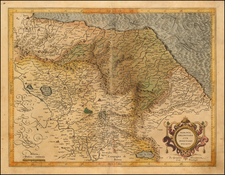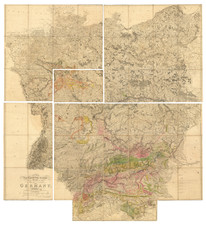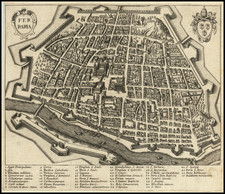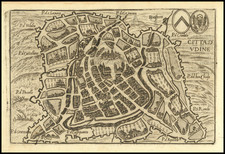Italian Riviera
This remarkable combination map and birdseye view by Johann Baptist Homann, is a detailed cartographic and artistic representation of the Republic of Genoa.
This map features a panoramic view of Genoa in the lower third, capturing the bustling port and intricate urban layout. The central portion is dominated by an elaborate title cartouche, adorned with allegorical figures representing seafaring, trade, and other maritime activities, highlighting the city's significant role in commerce and navigation.
Above the cartouche, the map itself depicts the Riviera, extending from Ventimiglia to La Spezia along the coast. The northern boundary of the depicted region is marked by the Po River. This geographic expanse emphasizes the strategic importance of Genoa and its surrounding territories during the early 18th century. Homann's work exemplifies the fusion of cartography and art, providing both a practical guide and a visual celebration of Genoa's prominence.
Johann Baptist Homann (1663-1724) was a mapmaker who founded the famous Homann Heirs publishing company. He lived his entire life in Bavaria, particularly in Nuremberg. Initially, Johann trained to become a priest before converting to Protestantism and working as a notary.
In 1702, Johann founded a publishing house that specialized in engravings. The firm flourished, becoming the leading map publisher in Germany and an important entity in the European map market. In 1715, Johann was named Imperial Geographer to the Holy Roman Empire by Charles VI and made a member of the Prussian Academy of Sciences. Most importantly for his business, his reputation and contacts gained him imperial printing privileges which protected his publications and recommended him to customers. Johann is best known for this Grosser Atlas ueber die ganze Welt, or the Grand Atlas of the World, published in 1716.
After Johann died in 1724, the business passed to his son, Christoph (1703-1730). Upon Christoph’s early death, the company passed to subsequent heirs, with the name of the company changing to Homann Erben, or Homann Heirs. The firm continued in business until 1848.









![[ Bologna, Italy ] Bononia [on verso:] Bisantium Folium LXII](https://storage.googleapis.com/raremaps/img/small/101465.jpg)

![[ Istria, Sloveniam, Northern Croatia ] Karstia, Carniola Histria et Windorum Marchia](https://storage.googleapis.com/raremaps/img/small/95562.jpg)


